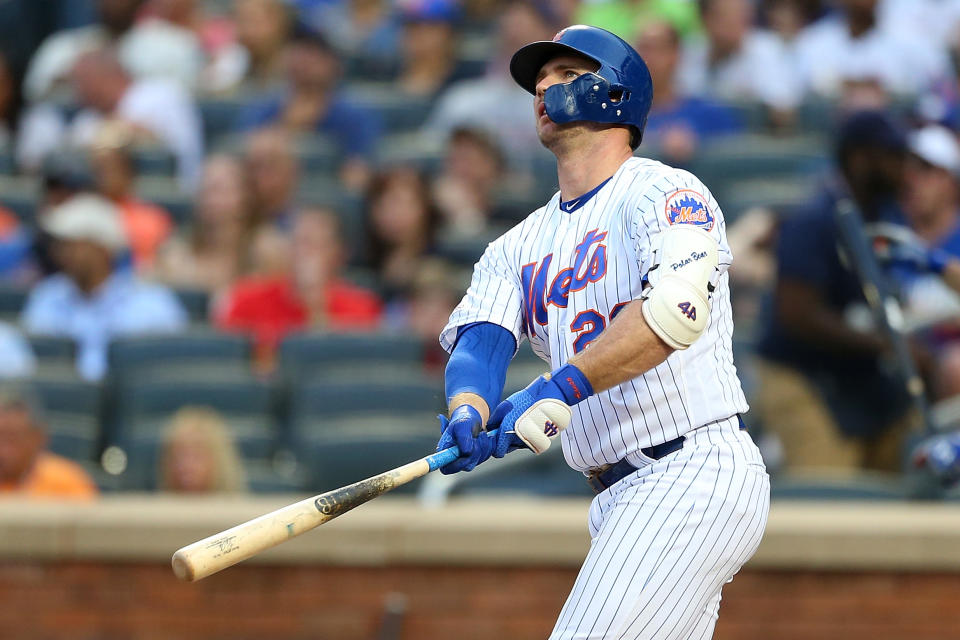How Statcast will track homers in the Home Run derby
As eventual champion Bryce Harper cranked baseballs over the fence in the 2018 Home Run Derby, advanced-metric stats flashed on the broadcast. Before the ball landed, viewers knew at what angle and how fast the ball exited the bat. The projected distance traveled sometimes appeared before the ball reached a fan's glove.
Each ball is analyzed by Statcast, MLB’s advanced tracking system which provides an abundance of data commonly used in the baseball analytics boom. A combination of cameras and radar collect information on the balls spin, speed, and trajectory as its headed toward the plate and upon its exit. The stats behind the system have become so popular, ESPN2 will once again broadcast a special Statcast edition of the Home Run Derby on Monday night.
Using Statcast, the broadcast will break down anything from the ball’s launch angle to a three-dimensional graph tracing its path from bat to the landing spot.
“There's more choices in terms of how to articulate what's happening in the game than we've ever had before,” said Phil Orlins, ESPN’s MLB senior coordinating producer. “It's a long way from telling you that a guy has hit more home runs this year than he did last year.”

It looks complicated. And to those unfamiliar with science and physics, it is. But through the use of radar, tracking home runs isn’t as crazy as it may seem.
To predict eventual launch points, Statcast utilizes an algorithm which synthesizes data (launch angle and exit velocity among other factors). It then projects where the ball will land using physics, in which an equation can predict projectile motion. Tracking a home run’s distance is similar to projecting a missiles landing spot, said Chris Marinak, MLB’s executive vice president of strategy, technology and innovation.
While radar is considered a blind technology, the added camera provides on-field landmarks to determine a hits distance traveled from home plate. All the information is gathered by ESPN through cloud computing and is translated to nearly instant on-screen graphics.
“It's just radar technology,” said Marinak. “It tells you spin. It tells you trajectory and it tells you movement. So that's just a fundamental element of radar. The same radar that's used to do radar for a radar gun.”
Adjustments for the Home Run Derby
Since Statcast was implemented into each MLB stadium in 2015, it has played a role in the Home Run Derby’s outcome. Last year, Harper smacked his walk-off homer in bonus time. In 2015, MLB added the perk that if a competitor hits two or more 440-foot home runs in a round, they will be granted 30 extra seconds of hitting time.
Since a glitch in the largely autonomous machine could not only impact broadcasts but also alter the outcome of the competition, MLB has added backup for the Home Run Derby. Normally, Statcast is operated by two or three spotters who communicate stats to the scoreboard operator and track human elements such as who hit the ball, to the data. On Monday, that staff is increased to between 10-12 workers.
In a normal game, the radar is programmed to pick up anything moving toward the plate at a rate more than roughly 50 mph. Since there are often around 20 seconds in between pitches during games, Statcast doesn’t falter often. But with pitches coming just seconds apart during the Home Run Derby, it can be harder to track.
A second radar, which is positioned at a different angle and operates on a different cadence, is implemented specifically for the event.
“If there is an off chance that one of them misses it,” Marinak said, “the second one will definitely pick it up.”
That’s all it will be on Monday for Statcast. Two radars combined with cameras and human supervision to track hundreds of home runs. The program doesn’t put a tracker in the ball or on player’s uniforms. In fact, it doesn’t alter the game in any way.
Statcast is merely analyzing and applying science. It’s a rather simple operation, just like the game used to be, before Statcast revolutionized it.
More from Yahoo Sports:


